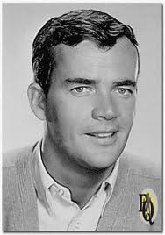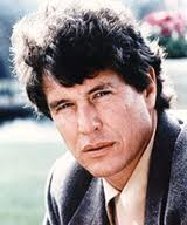
Seatbelts were invented by English engineer George Cayley, to use on his glider, in the mid-19th century.
In 1946, C. Hunter Shelden opened a neurological practice at Huntington Memorial Hospital in Pasadena, California. In the early 1950s, Shelden made a major contribution to the automotive industry with his idea of retractable seat belts. This came about from his care of the high number of head injuries coming through the emergency room. He investigated the early seat belts with primitive designs that were implicated in these injuries and deaths.
Nash was the first American car manufacturer to offer seat belts as a factory option, in its 1949 models. They were installed in 40,000 cars, but buyers did not want them and requested dealers to remove them. The feature was "met with insurmountable sales resistance" and Nash reported that after one year "only 1,000 had been used" by customers.
Ford offered seat belts as an option in 1955. These were not popular, with only 2% of Ford buyers choosing to pay for seatbelts in 1956.
To reduce the high level of injuries Shelden was seeing, he proposed, in late 1955, retractable seat belts, recessed steering wheels, reinforced roofs, roll bars, automatic door locks, and passive restraints such as air bags. Subsequently, in 1966, Congress passed the National Traffic and Motor Vehicle Safety Act, requiring all automobiles to comply with certain safety standards.
Glenn W. Sheren, of Mason, Michigan, submitted a patent application on March 31, 1955, for an automotive seat belt and was awarded US Patent 2,855,215 in 1958. This was a continuation of an earlier patent application that Sheren had filed on September 22, 1952.
However, the first modern three-point seat belt (the so-called CIR-Griswold restraint) used in most consumer vehicles today was patented in 1955 U.S. Patent 2,710,649 by the Americans Roger W. Griswold and Hugh DeHaven.
Saab introduced seat belts as standard equipment in 1958. After the Saab GT 750 was introduced at the New York Motor Show in 1958 with safety belts fitted as standard, the practice became commonplace.
Vattenfall, the Swedish national electric utility, did a study of all fatal, on-the-job accidents among their employees. The study revealed that the majority of fatalities occurred while the employees were on the road on company business. In response, two Vattenfall safety engineers, Bengt Odelgard and Per-Olof Weman, started to develop a seat belt. Their work was presented to Swedish manufacturer Volvo in the late 1950s, and set the standard for seat belts in Swedish cars. The three-point seatbelt was developed to its modern form by Swedish inventor Nils Bohlin for Volvo—who introduced it in 1959 as standard equipment. In addition to designing an effective three-point belt, Bohlin demonstrated its effectiveness in a study of 28,000 accidents in Sweden. Unbelted occupants sustained fatal injuries throughout the whole speed scale, whereas none of the belted occupants were fatally injured at accident speeds below 60 mph. No belted occupant was fatally injured if the passenger compartment remained intact. Bohlin was granted U.S. Patent 3,043,625 for the device.
The first compulsory seat belt law was put in place in 1970, in the state of Victoria, Australia, requiring their use by drivers and front-seat passengers. This legislation was enacted after trialing Hemco seatbelts, designed by Desmond Hemphill (1926–2001), in the front seats of police vehicles, lowering the incidence of officer injury and death. Mandatory seatbelt laws in the United States began to be introduced in the 1980s and faced opposition, with some consumers going to court to challenge the laws. Some cut seatbelts out of their cars.
If you want to read a whole lot more about seatbelts, go here:
https://en.wikipedia.org/wiki/Seat_belt
When you don't know what to have for dinner, we hope this is the recipe that comes to mind! Our Skillet Chicken and Veggies is fast, easy, and totally delicious. For kids and adults alike, this recipe is filled with flavor and is sure to help create good memories around the dinner table. Needless to say, this recipe is one you'll want to keep in your back pocket.
- 1 (1-ounce) envelope onion soup mix
- 1/4 cup vegetable oil
- 1/4 cup water
- Juice from 1/2 fresh lime
- 1/8 teaspoon cayenne pepper
- 1 teaspoon Italian seasoning
- 1 teaspoon garlic powder
- 1 1/4 pounds boneless, skinless chicken breasts, cut into 1/2-inch strips
- 1 (16-ounce) package frozen mixed vegetables
- In a large skillet, combine onion soup mix, oil, water, lime juice, cayenne pepper, Italian seasoning, and garlic powder. Bring mixture to a boil over medium-high heat.
- Stir in chicken strips and cook 5 minutes. Stir in vegetables and continue cooking 4 to 5 more minutes, or until chicken is no longer pink and vegetables are heated through.
On May 31st, we celebrate The Beehive State on National Utah Day!
Utah became the 45th state on January 4, 1896, and is home to The Great Salt Lake, a deeply rooted Native American heritage, and a far-reaching desert history.
Travel in the footsteps of Utah’s namesake, the Utes, or the Shoshone, Navajo or Goshute. Follow the trails of early explorers or Mormon settlers. They all lived among the natural arches and bridges formed long ago. These architectural wonders of nature are a cornerstone of Utah.
Find treasure everywhere you look. From the sunrise to the spiraling cliffs and the bejeweled night sky. Catch an unobstructed view of the Milky Way for miles or schedule a trip just in time for a meteor shower. Since Utah has significantly less light pollution, night star viewing is spectacular!
Discover why some still believe the world flat by visiting Bonneville Salt Flats. Home of land speed records and a barren environment, the salt flats were once part of a much larger lake. The Great Salt Lake is one of its remnants.
HOW TO OBSERVE National Utah Day
Join National Day Calendar as we celebrate the 45th state to join the union. Explore the history and people of Utah. Follow the trails of the pioneers and discover a wealth of heritage in one place.




















No comments:
Post a Comment